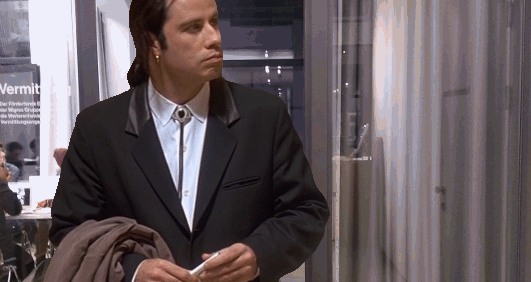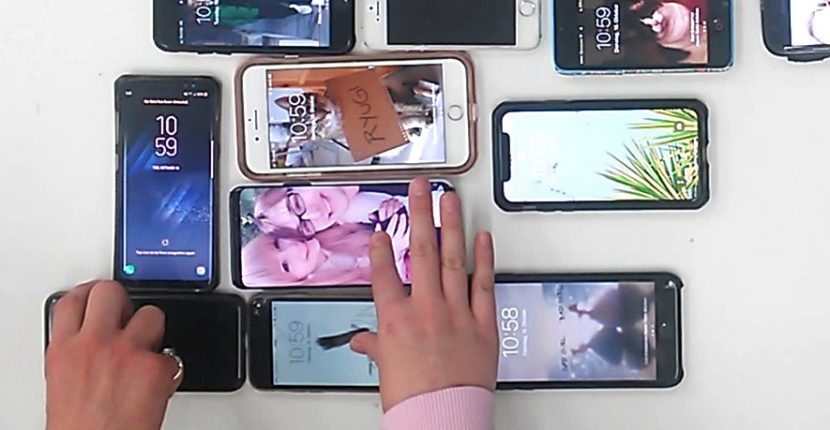In which context are you working as an art educator?
In 2014 I set up the art mediation at HeK (House of electronic Arts Basel), today we are two persons working in mediation and I am no longer responsible alone.
Before that I studied art, first fine arts in Zurich, then digital art in Vienna. I worked for a longer time in the academic field, as an assistant in Vienna and Zurich, at the same time pursuing my own artistic practice.
I came to mediation through my deep interest in the phenomena of the digital. In 2013 HeK was founded in its current form, and created a position for mediation. I found this constellation very interesting and developed a mediation concept which I was then able to implement and further develop at HeK.
For some time now, I have also been working in research contexts that are not directly related to mediation / education, which nevertheless open up interesting perspectives. In addition I work for independent projects.
With whom do you cooperate?
I work closely with the whole team of HeK. It’s a small institution, distances are short and the hierarchies are flat, which enables a very close cooperation with all departments. In addition to the internal team there is a team of freelancers* with whom I work mainly in the area of workshops.
In the context of research I work with theorist Felix Stalder and artist Cornelia Sollfrank. For independent projects I work with like-minded people from different areas of digital culture and art.
What is your understanding of art education?
I am interested in mediation as a space of action in which alternative aesthetic practices become possible.
In my heart I am also an artist, and I consider my practice (also as a researcher and teacher at universities) as extended artistic practice. As mentioned, I have always been interested in the very essence of the digital. Art is a great way to think about it in an applied way. And after the many years at HeK, I find that art education is an even better opportunity to think about it in an applied way in a broader and more open framework. In my work, digital technologies, electronic art and culture as a social echo space of the digital present are available to me as contexts. All this is my material. I try to invent, to let take place communal cultural forms in which we (all the different people involved, including myself as mediator) can have experiences. I think this is a terrific field of work.
What is the relationship (for you) between education and art?
In my view, art education has a great subversive potential to undermine the market-based logic of the art system and to free art from its lonely cage of the worshipped one and open it up for a broader aesthetic practice. This is central for me. It is clear that this often leads to conflicts with concepts of work and authorship. And it is helpful to understand that these conflicts are part of a very specific cultural order. To put it pointedly: this cultural order knows only author, work and recipient, with clearly separated roles. And this order is not a universal fact, but takes place in a very specific cultural-historical situation, and is deeply influenced by economic, political and ideological conditions (hence the generic masculine of the actors, of course this order is also one of social difference). It is not in my interest as a mediator to support this order, since it is a decisive reason for the precarious situation of mediation practice.
The context of digital art in my practice meets this critical attitude, because media art has a long history of questioning precisely this cultural order and producing alternative aesthetic practices and self-understandings.

Why mediate (contemporary) art? / Why educate people about (contemporary) art?
I am very sceptical about the term mediation, because it takes some things for granted I disagree with, above all the normative settings of the cultural order. I do not believe that art has to be mediated. I think that aesthetic practice must be practiced, and only then it can spread. That’s not the same thing, and I don’t think you can insist enough on this difference.
In what kind of relationship do you see the practice of curating and educating?
I sometimes like to say that I curate the educational program. By this I mean: I make a compilation, a composition of situations, practices, offers. I think this is very much an aesthetic practice, and if you wanted, one could also derive a concept of work from it, but that doesn’t interest me any further. I think it’s very powerful to see this as an aesthetic practice, also because then, mediation doesn’t always have to separate itself from curation and vice versa. There is an area where the two overlap, and this is an area that needs to be celebrated because it makes it more interesting for everyone.
Why is art education important for a museum or an institution?
I think this is a very ambivalent terrain, because it is a question of legitimacy. There are art institutions that have committed themselves to the modernist concept of art, which places the autonomy of art above everything else. But this autonomy is a problem, because it refuses ways of access. Rahel Puffert has explained this ambiguity very well: on the one hand, the autonomy of art is the reason for cultural mediation (because the hermetic must be mediated, otherwise the institutions would not fulfil their public mission), and on the other hand it is precisely the mediating, the making of connection that is always the reproach against mediation: it does not do justice to art. And sometimes, in impatient moments, I think: maybe these institutions really don’t deserve mediation. Because they abuse mediation as legitimization of their existence. I would like the funding agencies to take a closer look here. And I also wish that mediators would position themselves more strongly and confidently here.
Where do we find the (institutional) spaces, in which we can have a discussion about our experiences of art?
Everywhere. There are no places where art cannot be. I believe that discussing aesthetic experiences should be part of general culture. And I suspect that the art-trained eye is sometimes more of an obstacle to that. I see an incredible amount of potential for aesthetic experiences in digital pop culture, but mostly a reflex-like devaluation happens. Why is that? Isn’t cultural uncertainty the motor of aesthetic experience? Conversely, mediators know the situation very well when we stand in cultural institutions and have to deal with the uncertainty of our audience. I often wish that it wasn’t always so clear what art or culture exactly is. The fact that we always have to renegotiate this is for me one of the most interesting aspects of mediation and art in general.
To what extent can art education and art mediation open up a new sphere of action?
This depends on what term of action is used. I would argue for aesthetic agency in the broadest sense. And yes, I consider the task of mediation to create an awareness of it by exemplifying it.
Most people believe that art takes place in a museum, they don’t know any artists and have never been to a studio. But making life an ephemeral studio is like magic, but even more beautiful, because everybody can do it.
When do you think art education is successful? When do you think art education is complicated?
Art mediation is successful when people go home inspired – including the art mediator. As in every encounter. I find art mediation difficult when it reinforces the normative settings of institutions and a normative cultural order.
Is there a specific method or strategy you currently work with?
Aesthetic research, feminist theory, dialogue methods and humour.
What are you currently working on?
I am currently organising some workshops with female artists, which I am very much looking forward to. And I’m rolling out a few ideas on how we can better deal with the digital infrastructure of mediation for a funding application. Infrastructure is a very important issue for me right now, and the question of how practices can create communities and vice versa.
Then I’ve just developed a concept for a final exhibition with a curator friend of mine, I’m in conversation with an art space that is currently being set up, and I’m working on a documentation of my work.
Which books and projects are important for your work and why?
bell hooks: Teaching to Transgress. Because she formulates a comprehensive concept of education that touches me very much, because it focuses on all the normative aspects of education in the question: how to teach for freedom? There is a social and aesthetic dimension in it that I consider to be very important.
Constant: The Techno-Galactic Guide to Software Observation. Constant is an artist-run art association for art and media, based in Brussels. They have developed many free and extremely stimulating methods and discourses on technology, and in this they are my role model. And I share the love for software as cultural objects, which is the subject of this publication.
Bauer / Heinemann / Lemke: Science and Technology Studies. STS open a transdisciplinary perspective on technology and knowledge as cultural and social phenomena. This perspective is very important for my work. In this reader, the history of this discipline is outlined, with many highly interesting figures of thought, which inspire me again and again to ask different questions, and to pose questions differently.
Which questions would you like to ask an art educator?
What do you love about your job?
How do you imagine the future of art education?
I would wish for an explosion of aesthetic practices. I imagine how a practice will grow out of art education that goes beyond all concepts and categorization of work, that carries aesthetic practices of all kinds out of the doors of the museum into the world, into the everyday life of people. I think I’m quite romantic about this, but with a strong pinch of punk.
Shusha Niederberger *1974, works at the intersections of technology, art and culture. She studied visual and digital art in Zurich and Vienna and then worked as an assistant and research assistant at art universities in Vienna and Zurich. Since 2014 she has been head of cultural mediation at HeK (House of Electronic Arts Basel) and since 2015 she has been teaching contemporary net culture as a lecturer at the F+F School for Art and Media in Zurich. She has been a research associate in the SNSF research project “creating commons” (2017-2019) at IFCAR (Institute of Contemporary Art Research) at ZHDK Zurich. She is a member of the Swiss Society for Art Education and the Swiss Society for Mechatronic Art, and has organized the “electronnes” Festival for Art, Technology and Women* in 2017. She regularly gives talks about the cultural dimensions of the digital.
www.shusha.ch
@shu_sha_
publishes Feb 10th 2020
Interview: Gila Kolb
Image: Mobile phone screen: Workshop “digital pocket culture”, Mediamus conference, March 2019, Image by Shusha Niederberger.
